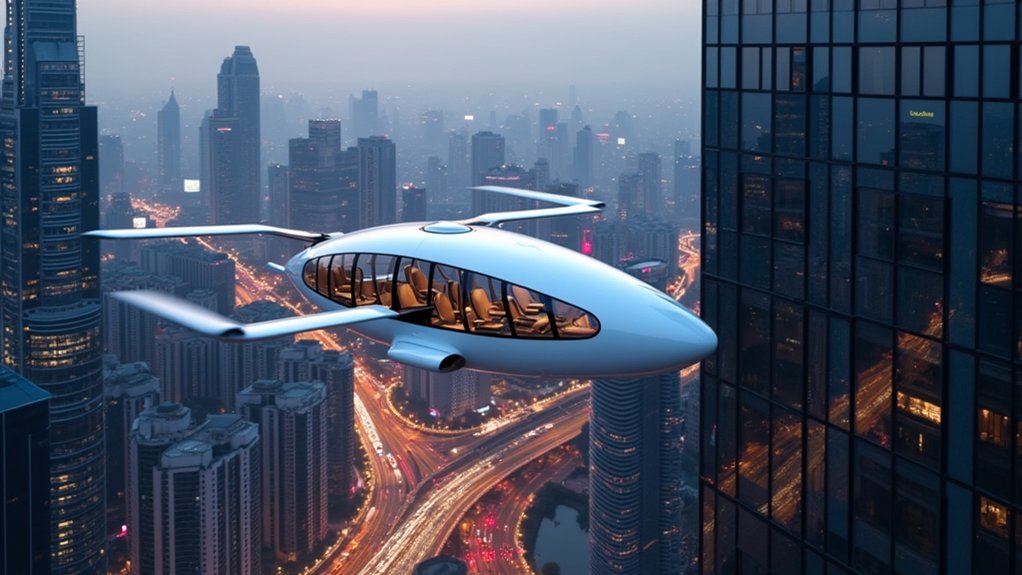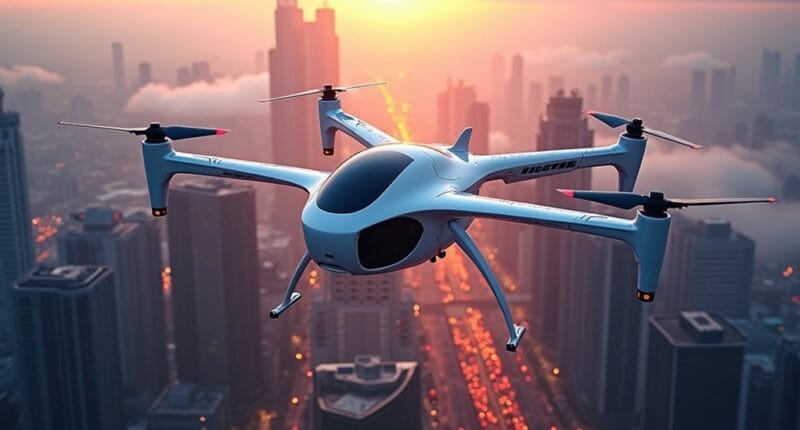China’s pilotless flying taxis won’t entirely replace cars anytime soon, but they’re definitely shaking things up. The newly approved EH216-S can zip through cities at 130 kilometers per hour, carrying two passengers for about 30 kilometers per charge. While 16 Chinese cities are gearing up for aerial taxi service by 2025, challenges like infrastructure and public trust remain. Still, for those tired of gridlock, the skies might offer an interesting alternative.

As China races ahead in the autonomous vehicle revolution, pilotless flying taxis are no longer just science fiction. The Civil Aviation Administration of China has given the green light for companies like EHang to operate their autonomous passenger drones commercially. Yes, you read that right – actual flying taxis without pilots.
EHang’s EH216-S model is leading the charge, resembling a giant drone with 16 propellers that can zip through the air at speeds up to 130 kilometers per hour. It’s fully electric, seats two passengers, and can travel about 30 kilometers on a single charge. Not exactly a cross-country road trip machine, but perfect for beating rush hour traffic in crowded cities. The innovative technology behind these vehicles offers sustainable mobility solutions for expanding urban centers. Similar to ground-based autonomous vehicles, these aerial taxis face traffic response challenges that require ongoing development.
With 16 propellers and speeds of 130 km/h, EHang’s electric air taxi promises a high-flying solution to urban gridlock.
The Chinese government is going all-in on this technology, viewing it as essential as AI and quantum computing. They’re not just throwing money at it – they’re creating entire regulatory frameworks to make it happen. By mid-2025, tourists in Guangzhou and Hefei will be the first to experience these aerial taxis. Talk about an Instagram-worthy ride.
But let’s get real for a minute. There are some serious hurdles to overcome. The technology is still developing, and convincing people to hop into a pilotless aircraft isn’t exactly a walk in the park. Plus, these vehicles need special landing pads and charging stations – you can’t just park them in your garage.
Cities like Shenzhen, Hefei, and Guangzhou are already testing these aerial vehicles, with 16 Chinese cities jumping on the autonomous bandwagon. The government sees this as part of their “low-altitude economy” initiative, which sounds like something from a sci-fi novel but is very much real.
Will these flying taxis replace cars entirely? Probably not anytime soon. But in 3-5 years, don’t be surprised if you look up in major Chinese cities and see commuters floating above traffic jams in their autonomous aerial vehicles. The future is here – it’s just waiting for its operating permit.





